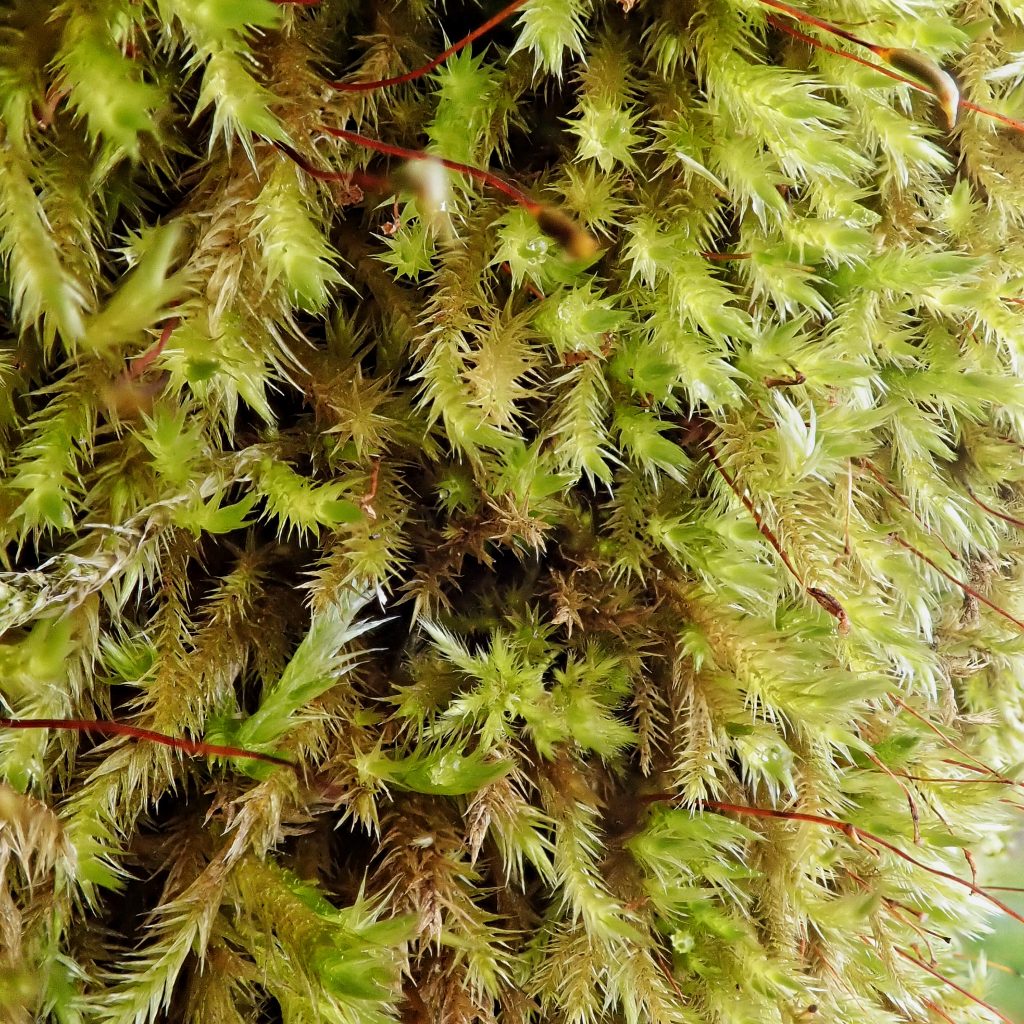
I spent a good chunk of yesterday unsuccessfully trying to identify a moss I had thought would be relatively easy. In the process of doing that I ran across a photo that looked very similar to this moss, which I had been putting off because I thought it would be hard.
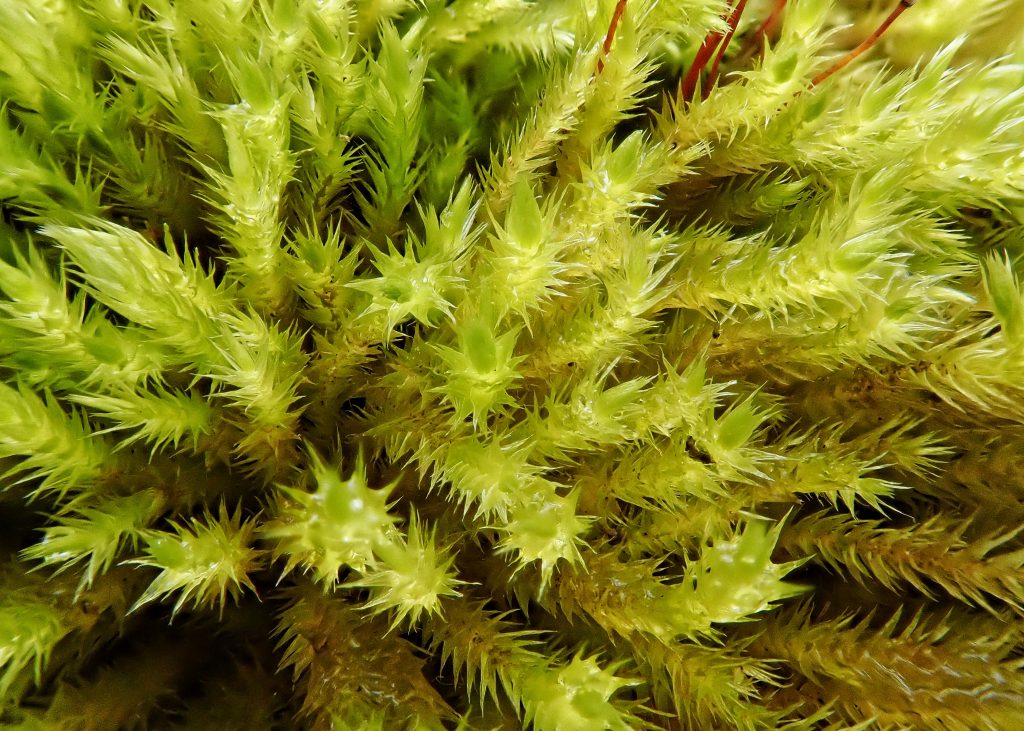
When I finally gave up on the other moss, and turned my attention to this one, a straightforward half an hour was sufficient to positively identify it as Homalothecium fulgescens. That was due, in part, to its relatively high (couplet #5 in Flora of North America) placement in the key, as well as to the relative ease of determining how dentate the leaf margins are.
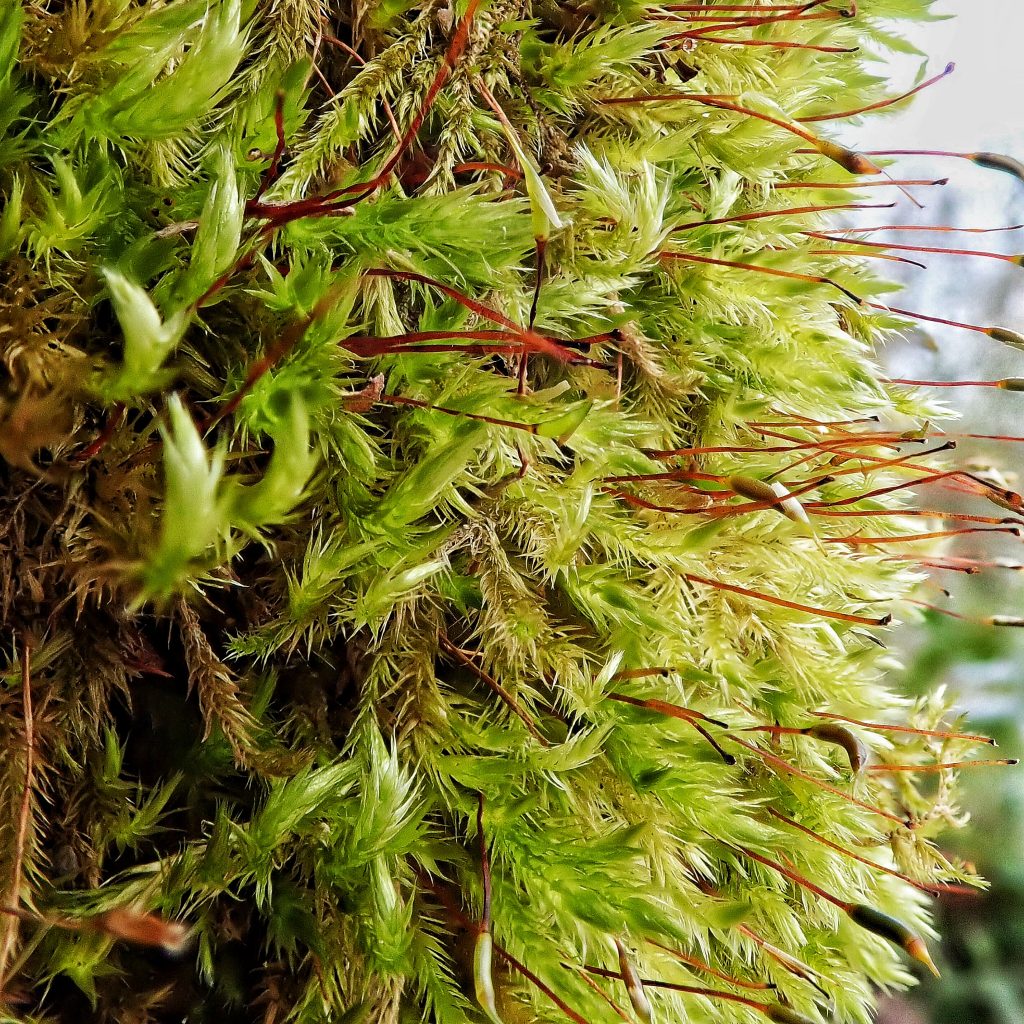
This is a common moss on deciduous trees, especially Big Leaf Maples. I found this colony on a large Black Cottonwood. I happened to be there a dry week after I first found it, so I got some nice photos of it in a much less hydrated state.
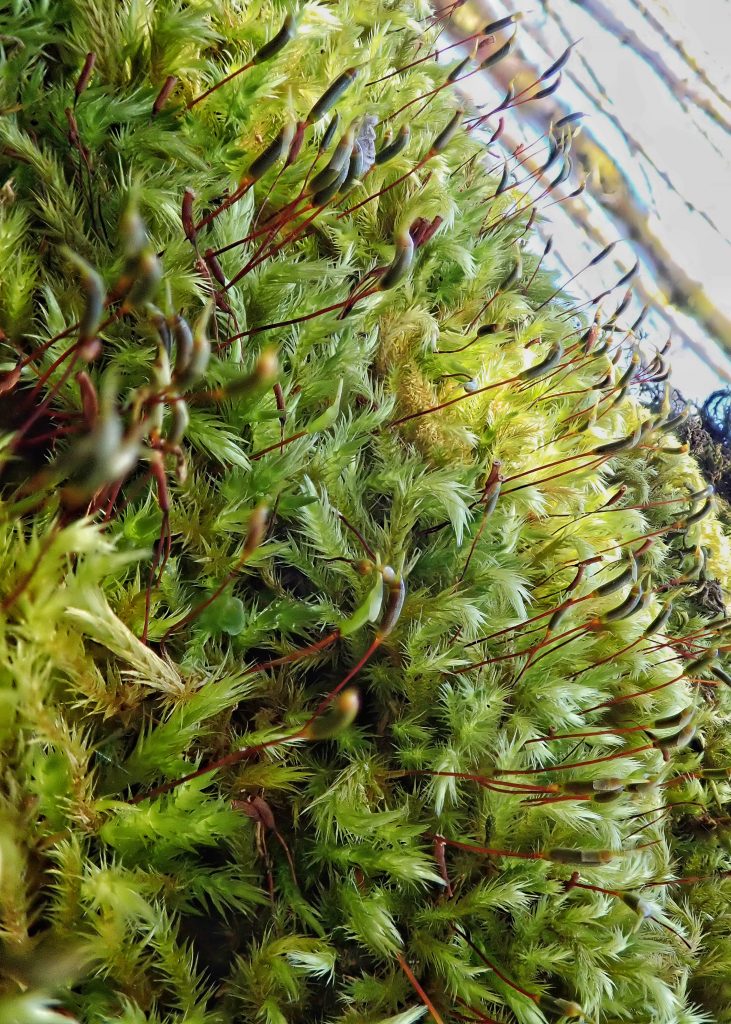
Epiphytic mosses help to hold and slowly release water from rainfall, but because they are on a vertical surface they are prone to drying out. It is therefore good to be able to recognize them in various states of hydration.
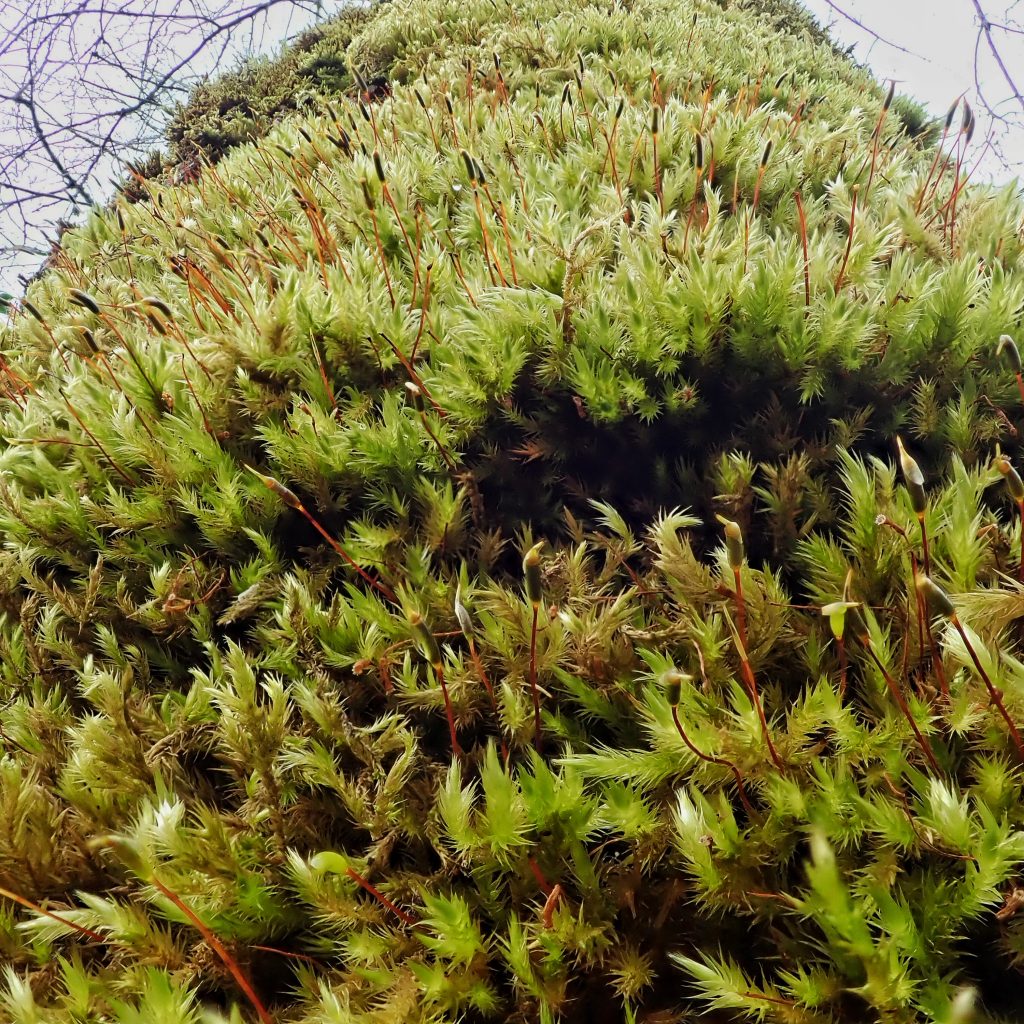
I’m sure I have seen Homalothecium fulgescens before, but I had never taken the time to identify it. I have identified its cousin H. nuttallii before, and I think I know of a colony. I’ll try to get over there, get some pics, and profile it while H. fulgescens is still fresh in everyone’s minds.
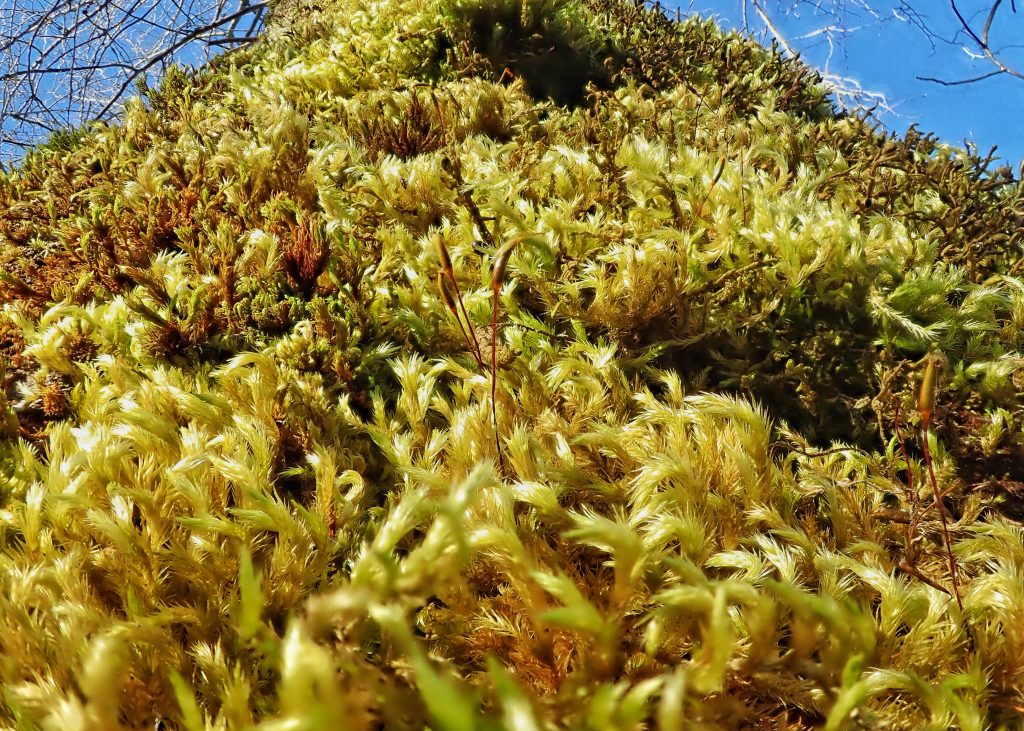
Description-Yellowish green prostrate pleurocarp; pinnate, but branching is irregular and widely spaced; leaves 2-4mm long, plicate; leaf margins slightly curled in midsection, mostly smooth, weakly toothed along the sharply pointed apex; costa single and long; only 1-3 rows of laminal (body of the leaf) basal cells; when dry the leaves remain straight, and generally do not adhere to the stem; capsule erect, smooth and cylindrical, somewhat curved (arcuate) when dry, with a beaked (rostrate) calyptra.
Similar species–H. nuttallii leaves have sharp, recurved teeth from base to apex; H. aeneum has smaller leaves, capsule is inclined to horizontal, leaf apex broadly pointed, grows mostly on rock.
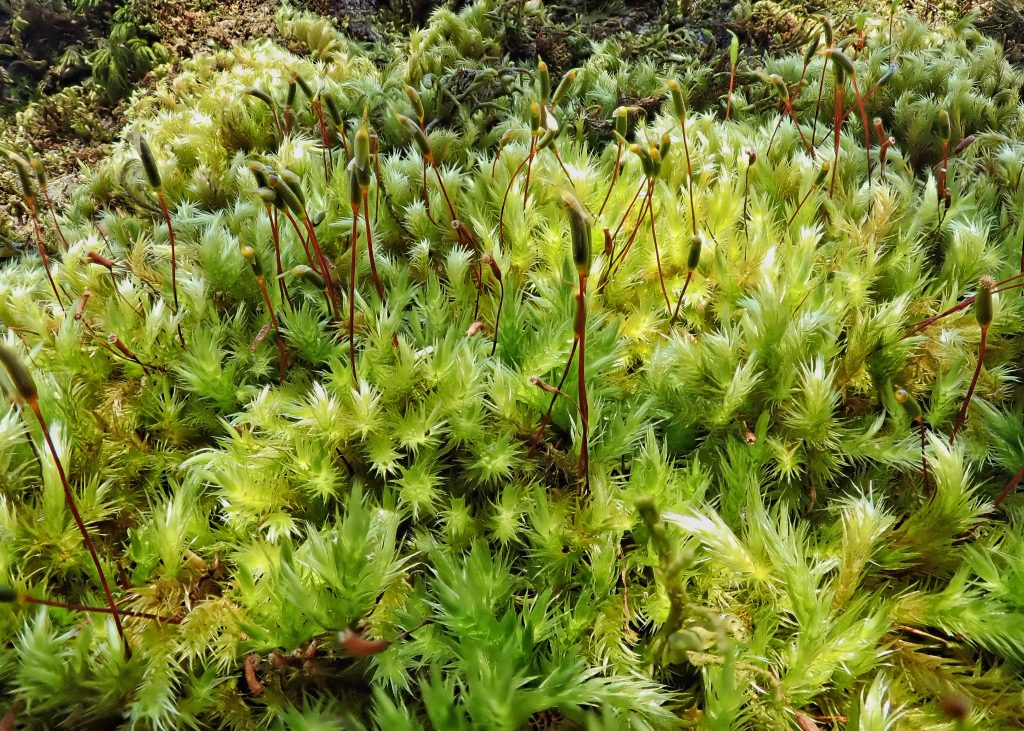
Habitat– Epiphyic on tree trunks, logs, and rocks in partial shade up to 6,000’.
Range-Northwestern North America; region wide in appropriate habitat, most common west of the Cascades.
Reproductive timing-Year around, but most common in winter and spring.
Etymology of names– Homalothecium roughly translates from Latin as ‘even case’ and alludes to the straight sides of the capsules of many of the members of this genus. The specific epithet fulgescens is from the Latin for ‘shiny’, and refers to the glossy appearance of the mats of this moss when they are dry.
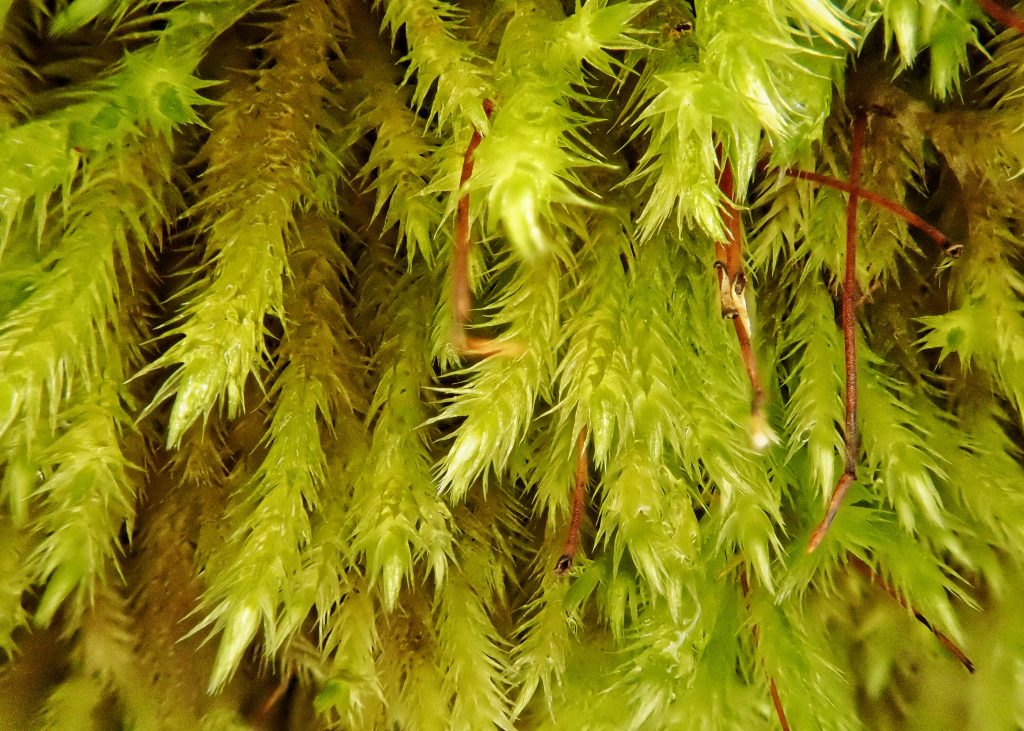
http://www.efloras.org/florataxon.aspx?flora_id=1&taxon_id=250099149
http://linnet.geog.ubc.ca/Atlas/Atlas.aspx?sciname=Homalothecium%20fulgescens
http://fieldguide.mt.gov/speciesDetail.aspx?elcode=NBMUS3L030
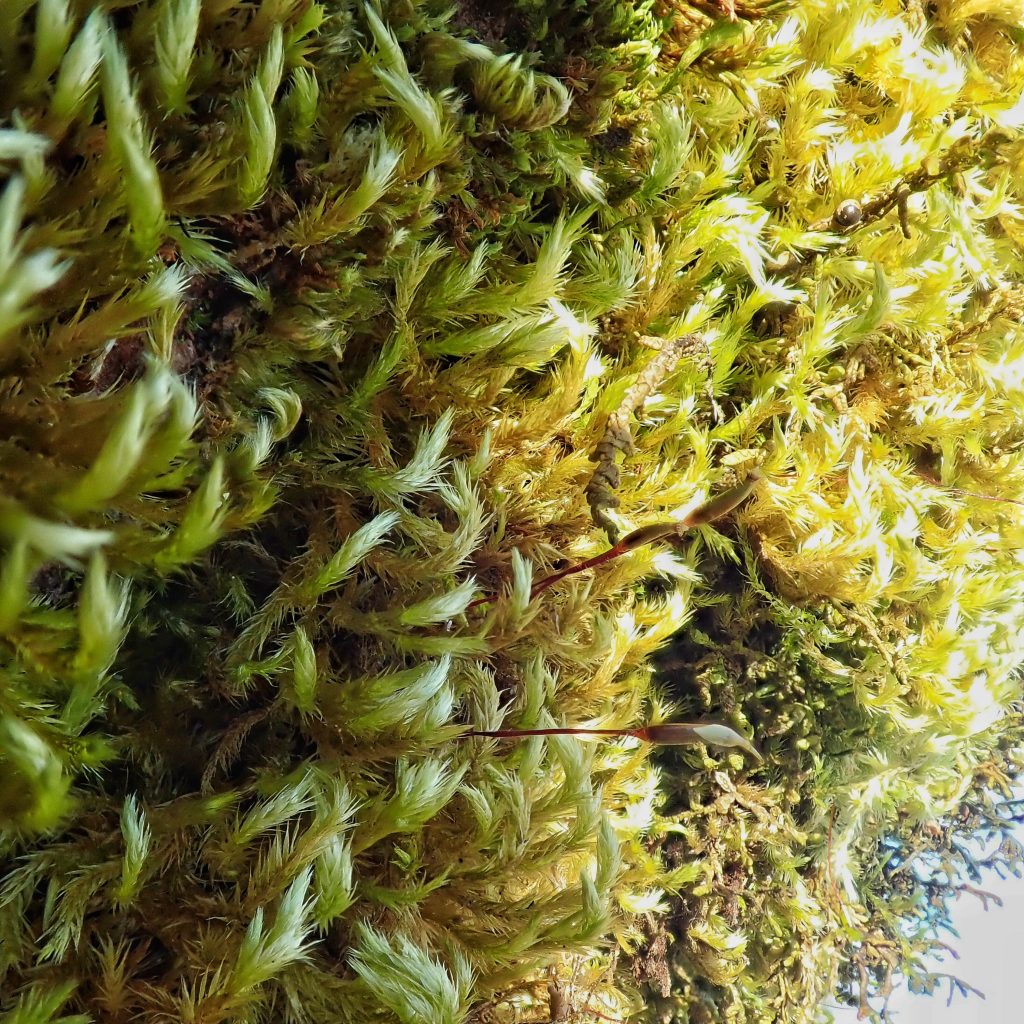
Would any of these be growing in east Tennessee…. Close to Smoky Mountains park? Took a lot of pictures today… Lovely but no name!
No, they are only found in the PNW. Good luck!
I love these photos!! Thanks:):)
Your posts and emails are wonderful, especially in this usually dark winter. One person I shared with remarked on the marvelous diversity of life. I do not understand, either, why Facebook would not encourage these life-affirming posts!
Thanks, Helen! I’ve come to the conclusion that I just ran afoul of an impersonal algorithm, and have adjusted my process accordingly.